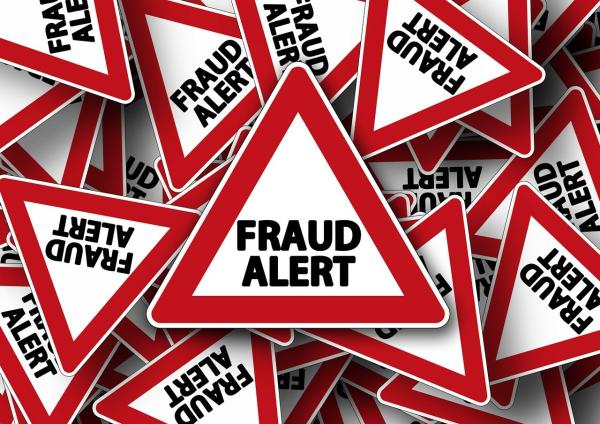According to a 2022 study in the Netherlands, over the last three years, one in two researchers had engaged frequently in at least one “questionable research practice,” with “not submitting or resubmitting valid negative studies for publication” being the most common practice. The fields of life and medical sciences had the highest prevalence (55.3%) of engaging in questionable practices compared to other disciplines.
According to the Office of Research Integrity, Department of Health and Human Services, scientific fraud or research misconduct involves:
- Fabrication: making up data or results and recording or reporting them.
- Falsification: manipulating research materials, equipment, or processes, or changing or omitting data or results such that the research is not accurately represented in the research record.
- Plagiarism: the appropriation of another person's ideas, processes, results, or words without giving appropriate credit.
- Research misconduct does not include honest error or differences of opinion.
Scientific fraud can ripple across society with long-lasting consequences. Consider two: the first, Andrew Wakefield, vaccines and autism; the second, assessing cancer risk.
Vaccines and Autism
In 1998, Andrew Wakefield and twelve colleagues published a paper in the distinguished journal Lancet that said the measles, mumps, and rubella (MMR) vaccine may trigger autism. The study reported on 12 children, all  with intestinal abnormalities, including abdominal pain, diarrhea, and food intolerance. Eight of the 12 children were reported to have behavioral problems, most diagnosed as autism, which occurred between 24 hours to 2 weeks after the child’s MMR vaccine. The authors concluded, “We have identified a chronic enterocolitis in children that may be related to neuropsychiatric dysfunction. In most cases, the onset of symptoms was after measles, mumps, and rubella immunization. Further investigations are needed to examine this syndrome and its possible relation to the vaccine.”
with intestinal abnormalities, including abdominal pain, diarrhea, and food intolerance. Eight of the 12 children were reported to have behavioral problems, most diagnosed as autism, which occurred between 24 hours to 2 weeks after the child’s MMR vaccine. The authors concluded, “We have identified a chronic enterocolitis in children that may be related to neuropsychiatric dysfunction. In most cases, the onset of symptoms was after measles, mumps, and rubella immunization. Further investigations are needed to examine this syndrome and its possible relation to the vaccine.”
Almost immediately, epidemiologic studies were performed and published, showing no causal link between autism and the MMR vaccine. However, the Wakefield study received worldwide publicity, and MMR vaccination rates began to drop over parental concern about the link between autism and the vaccine.
It was not until 2010, twelve years later, that the interpretation of the original data was retracted by 10 of the 12 co-authors of the study. The retraction said, "No causal link was established between MMR vaccine and autism as the data were insufficient.” Lancet also found that Andrew Wakefield had failed to notify them that he had been funded by lawyers representing parents in lawsuits against vaccine-producing companies. Although Wakefield lost his medical license, Lancet absolved Wakefield and his colleagues from charges of scientific misconduct or ethical violations.
In 2011, an investigative journalist wrote several articles on the MMR scare. After comparing the children’s anonymized case records with what was published in the Lancet article, he determined that the data had been substantially misrepresented to give Wakefield the desired result. Thus, the MMR scare was not poorly performed science; it was a deliberate fraud.
The Wakefield MMR vaccine article will likely go down as one of the most serious frauds in scientific history. This article fueled the anti-vax movement, and even today, 26 years after the publication of the retracted article, parents still refuse vaccinations due to the fear of autism.
Cancer Risk Assessment
Cancer risk assessment is a critical feature of environmental health and regulatory policy used by governments to determine the environmental risks of chemicals and radiation. It answers the question as to what the risk is, at the population level, of developing cancer at different exposure levels.
Dr. Ed Calabrese has spent the last 20 years researching the historical foundations of cancer risk assessment. His work culminated in a documentary by the Health Physics Society that presents the fraudulent science behind the linear no-threshold (LNT) dose-response model adapted by practically all U.S. agencies for chemical and radiation cancer risk assessment.
- The linear no-threshold (LNT) model assumes that every increment of a chemical or radiation dose, no matter how small, constitutes an increased cancer risk for humans.
- The threshold dose-response model assumes an exposure level below which there is no increased cancer risk.
Here are a few highlights from a long history of how we got to the current state of cancer risk assessment:
After World War II, the U.S. government was on a quest to better understand the biological impacts of radiation. Hermann Muller, a U.S. radiation geneticist, claimed to be the first to produce gene mutations using high exposure to X-rays in fruit flies, for which he received the Nobel Prize in 1946. However, Muller did not actually discover gene mutations. Instead, the X-rays used in his experiments caused holes in the chromosomes (not genetic mutations). Muller finally acknowledged significant errors in his research ten years after his Nobel Prize.
Muller used his prestige and power to make the case that there is no safe dose for radiation and that the long-standing use of the threshold dose-response model should be discarded and replaced with the LNT model and to block credible research that disagreed with his findings:
- Ernest Caspari conducted the largest and best study of that time on the chronic effects of radiation on fruit flies (1946). The study showed that there was no increase in mutations at the “low” chronic radiation dose rate (still about 100,000 times above background). This study supported the threshold, not the LNT model. Mueller ignored Caspari’s results in his papers and presentations and convinced other professors not to accept Caspari’s findings.
- The National Academy of Sciences created the Biological Effects of Atomic Radiation (BEAR) I Genetics Panel to advise the country on these issues. The Panel, under Muller’s direction, ignored any research that did not support “his” LNT model, including a 10-year study that showed no adverse effects on 75,000 offspring of the atomic bomb survivors of Hiroshima and Nagasaki. The Panel’s published findings in Science contained serious errors and misrepresentations, including altering the scientific record to mask the disagreements on risk assessment between the Panel members.
- The Panel findings were adopted, and the LNT model became the regulatory standard for the EPA. The descendant of BEAR, the Biological Effects of Ionizing Radiation (BEIR) Committee, has issued many reports since then, clinging fervently to the LNT model despite all contrary scientific evidence.
The impact of the LNT model guiding Federal Agencies is that every questionable molecule of a chemical or radiation must be eliminated, or public health is at risk. This has resulted in billions of dollars spent to eliminate chemicals to levels that have no impact on human health and the unnecessary removal of products, many of which are critical today.




